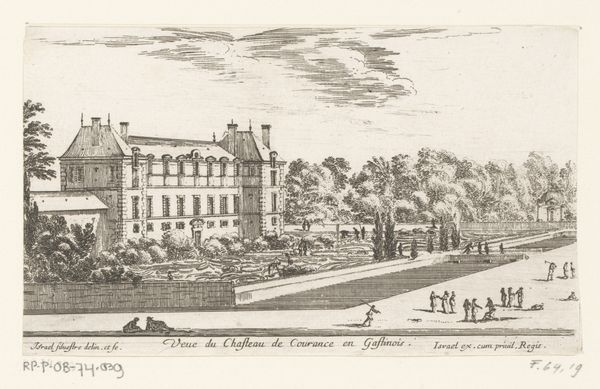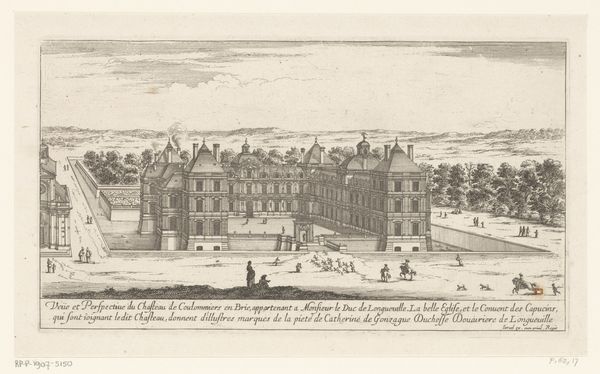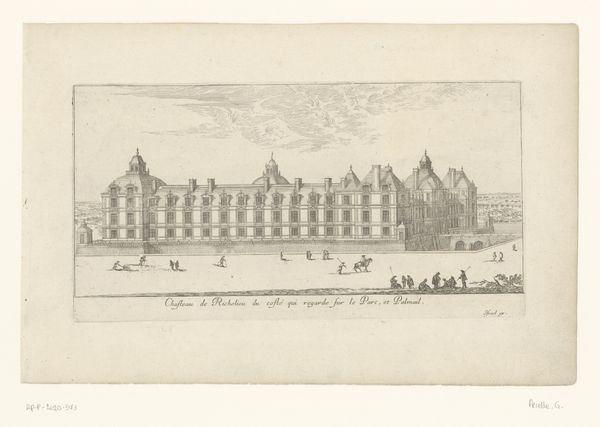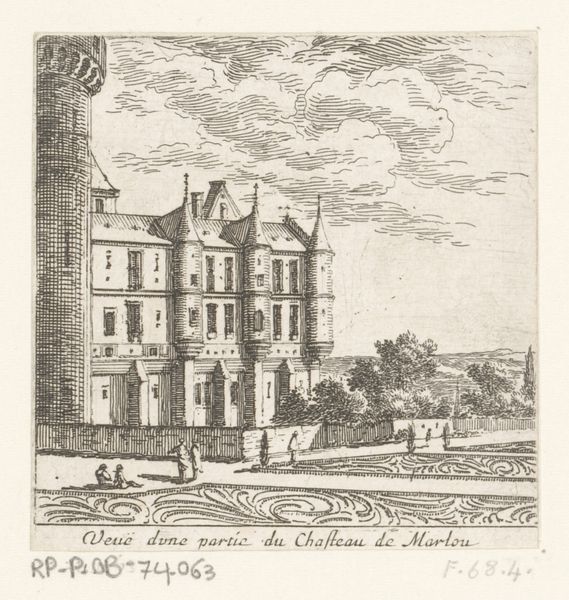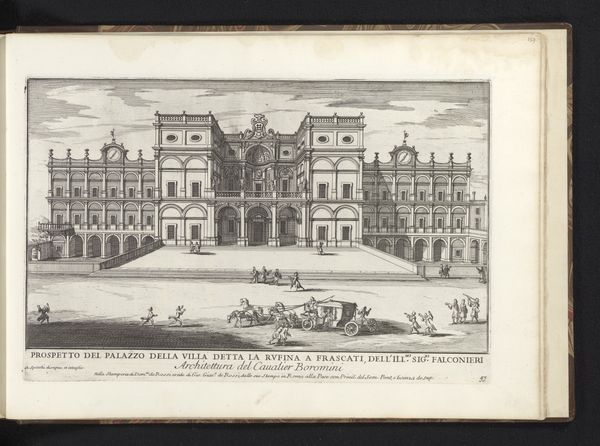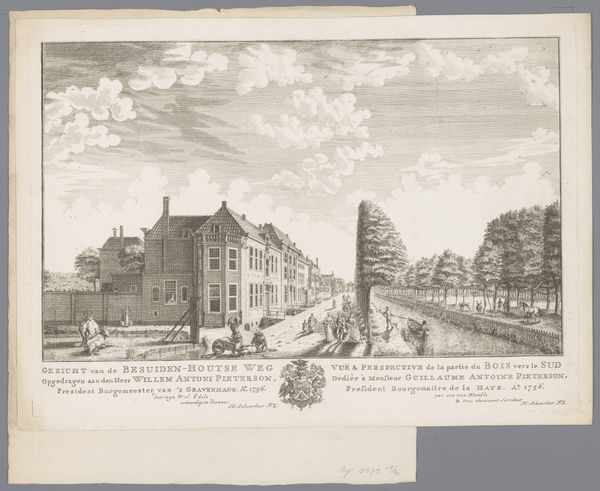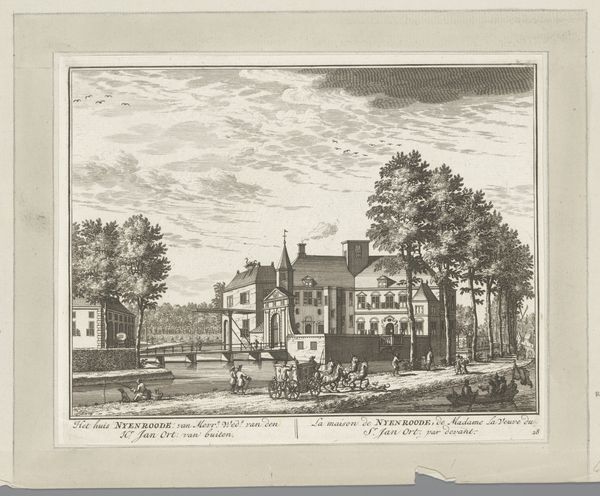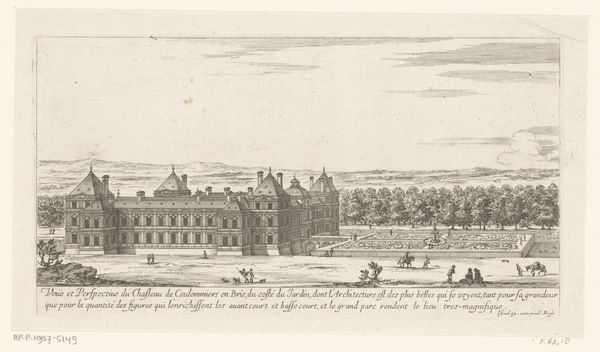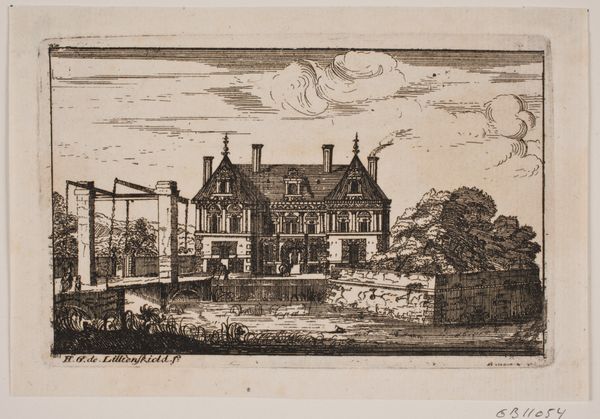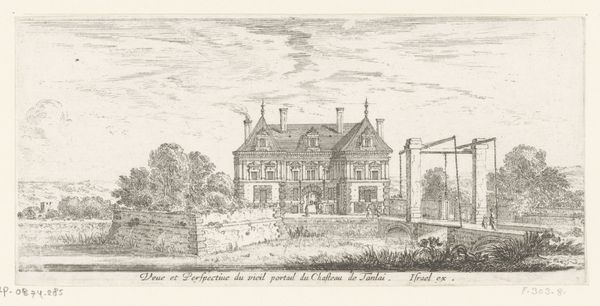
print, etching
#
baroque
# print
#
etching
#
landscape
#
etching
#
cityscape
Dimensions: height 124 mm, width 239 mm
Copyright: Rijks Museum: Open Domain
Curator: This etching, crafted by Israel Silvestre before 1655, offers us a glimpse of the "Gezicht op Château de Chilly," a landscape scene now residing in the Rijksmuseum. It looks like an idealized view. Editor: Yes, there is definitely a serene quality, wouldn’t you agree? The intricate lines and delicate shading give it an almost ethereal feel. The light seems to reflect off the Chateau evenly with slight nuances, creating a very formal composition that is all about balance and spatial relationships. Curator: Certainly, that composition serves its purpose: it reflects the power of the location, portraying the Château not merely as a building, but as a center of influence, especially since it belonged to the Maréchalle d'Effiat, highlighting the role of women in positions of power in that era. It's important to think about this print as more than just an image; it's a statement about property and social status. Editor: You’re right to note the status element; however, one might also observe that the baroque aesthetic of the surrounding structures lends itself perfectly to emphasizing symmetry and geometrical order. It is about taming nature, subordinating organic form to rational design. The horizontal lines draw your eye across the facade of the building and garden landscape which speaks of architectural clarity above all. Curator: And while the rigid organization speaks volumes about Baroque sensibilities, perhaps it mirrors the political atmosphere, underscoring control during the age of absolutism? Think of the implications when these estates changed ownership; it shifts social capital. Each owner adds layers to its symbolic weight that continue to reshape and echo across history. Editor: Agreed, those aspects remain crucial. But focusing on form reveals an intention of Baroque architects and artists that, regardless of who commissioned a work or benefited from it, aesthetics still play an indispensable part in shaping our perceptions. Look at the light playing with those dome features for a brilliant counterpoint! Curator: By analyzing this print, we gain a glimpse into both art and politics; it highlights landscape and life during that historical juncture. Editor: Quite so. Through composition and the power relations reflected by form and location in landscape art, it continues to fascinate.
Comments
No comments
Be the first to comment and join the conversation on the ultimate creative platform.
